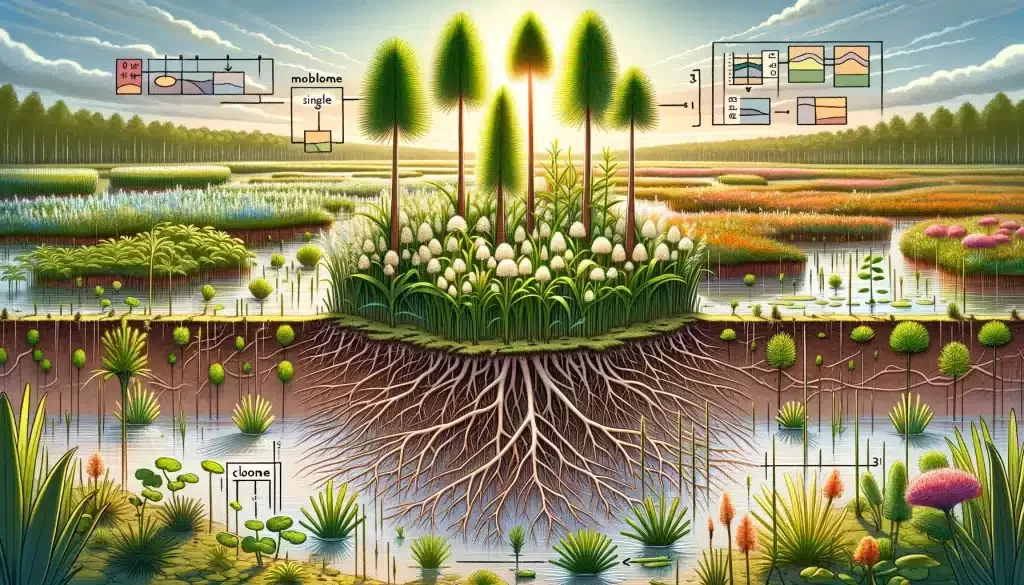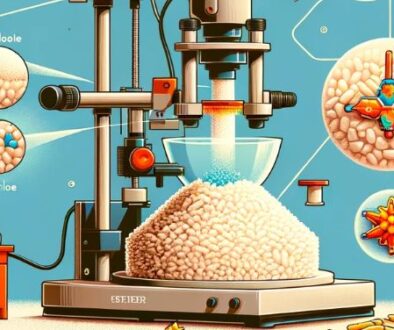Effects Of Initial Clone Number On Morphological Plasticity And Biomass Allocation Of The Invasive Spartina Anglica Effects Of Initial Clone Number On Phenotypic Plasticity And Biomass Allocation Of Spartina
Exploring Spartina anglica’s decline through comparative growth studies, offering insights into biomass distribution, clonal reproduction strategies, and implications for biological control.
The clonal plant Spartina anglica is currently experiencing severe natural decline (Dieback) in my country. In order to elucidate the mechanism of Spartina anglica decline, the correlation between the factors affecting the morphological plasticity of Spartina anglica and the natural decline was analyzed, with a view to identifying close relatives. This study provides a reference for the biological control of the outbreak population of S. alterniflora, and studies the clonal growth, biomass accumulation and distribution of three different initial clonal ramet numbers (single clone, triple clone and five clones) of Spartina alterniflora. Allometric growth characteristics were tested in field cultivation. The research results show that the number of initial clone ramets has a weak effect on the spacer length; the branch strength of the initial polyclonal is higher than that of the initial monoclonal; the initial three-clonal and five-clonal clones have a lower total biomass (7.9215~10.4317g and 8.9039~10.4317g), The accumulation of aboveground biomass (3.3961~4.2558g and 3.6184~4.3389g), underground biomass (4.2869~5.2066g and 5.2988~6.0793g) and rhizome biomass (1.3186~1.7677g and 1.4991~2.0387g) were all significant. Higher than the initial single clone, there is no significant difference in root biomass under different initial clone ramet numbers; the initial polyclonal tends to allocate more resources to rhizomes, while the initial single clone tends to allocate more resources to the root system . It can be inferred that under different initial clonal ramet numbers, the differences in morphological plasticity and biomass distribution pattern of Spartina show that under the same resource pattern, the clonal reproductive capacity of initial polyclones is stronger than that of initial monoclonals. The initially polyclonal Spartina grows in a more dominant habitat than the initial monoclonal Spartina, and has a stronger ability to select habitats for “foraging” and clonal reproduction.
Introduction to Spartina Dieback and Research Significance
In recent environmental research, significant attention has been focused on the clonal plant Spartina anglica, which is experiencing a severe natural decline, commonly referred to as Dieback, within the observed regions. The importance of understanding the mechanisms behind this decline cannot be overstated, particularly as it holds implications for biological control strategies against invasive species such as Spartina alterniflora. This paper endeavors to shed light on the correlation between morphological plasticity in Spartina anglica and its natural decline, with an aim to draw parallels and identify correlations with its close relative, Spartina alterniflora, thereby offering a comprehensive insight into potential control measures for its outbreak populations.
Study Overview: Clonal Growth Analysis of Spartina Alterniflora
Our study meticulously analyzes the clonal growth, biomass accumulation, and distribution across three distinct initial clonal ramet numbers (single, triple, and quintuple clones) of Spartina alterniflora through field cultivation. This approach allows for a nuanced understanding of allometric growth characteristics, providing a basis for comparative analysis with Spartina anglica. The findings from this study reveal that the number of initial clone ramets exerts a minimal impact on spacer length. Interestingly, it was observed that the branching strength of polyclonal initiations surpasses that of monoclonal initiations, suggesting a more robust clonal development.
Research Findings: Impact of Clone Numbers on Biomass Accumulation
Furthermore, the study highlights significant findings regarding biomass accumulation. Initial polyclonal setups with three and five clones exhibit lower total biomass (ranging from 7.9215 to 10.4317g and 8.9039 to 10.4317g, respectively) compared to monoclonal setups. This pattern extends to the accumulation of aboveground biomass, underground biomass, and rhizome biomass, all of which were notably higher in polyclonal initiations than in monoclonal ones. Notably, no significant difference was found in root biomass across different initial clonal ramet numbers, indicating a particular strategy of resource allocation in polyclonal versus monoclonal setups; polyclonal initiations tend to allocate more resources towards rhizomes, whereas monoclonal initiations favor root system development.
Comparative Analysis and Ecological Implications
These results infer a critical aspect of Spartina’s ecological adaptation: the morphological plasticity and biomass distribution patterns vary significantly under different initial clonal ramet numbers. Such variations underscore the enhanced clonal reproductive capacity and habitat dominance of polyclonal initiations over monoclonal ones. This superiority in habitat selection for foraging and clonal reproduction underpins the competitive advantage of polyclonal Spartina, suggesting that polyclonal growth strategies may be integral to understanding the natural decline observed in Spartina anglica.
Conclusion and Contributions to Environmental Management Strategies
In conclusion, the study not only elucidates the underlying mechanisms of Spartina anglica’s decline but also provides valuable insights for the biological control of Spartina alterniflora’s outbreak populations. By understanding the differential growth and biomass distribution patterns among Spartina clones, we pave the way for more effective management strategies aimed at preserving biodiversity and preventing the spread of invasive species. This research thereby contributes significantly to the field of environmental science, offering a foundation for future studies on the ecological dynamics of clonal plants and their impact on ecosystem health.
For futher details of this article and research, feel free to contact our team for assistance.
Original research was done by ZHAO Lei, ZHI Ying-Biao, LI Hong-Li, AN Shu-Qing, DENG Zi-Fa, ZHOU Chang-Fang, Zhao Lei, Zhi Yingbiao, Li Hongli, An Shuqing, Deng Zifa, Zhou Changfang
About ETprotein:
ETprotein, a reputable plant protein vegan protein Chinese factory manufacturer and supplier, is renowned for producing, stocking, exporting, and delivering the highest quality organic bulk vegan protein and plant proteins. They include Organic rice protein, clear rice protein, pea protein, clear pea protein, oat protein, watermelon seed protein, pumpkin seed protein, sunflower seed protein, mung bean protein, peanut protein, various of plant peptides etc. Their offerings, characterized by a neutral taste, non-GMO, allergen-free attributes, cater to a diverse range of industries. They serve nutraceutical, pharmaceutical, cosmeceutical, veterinary, as well as food and beverage finished product distributors, traders, and manufacturers across Europe, USA, Canada, Australia, Thailand, Japan, Korea, Brazil, and Chile, among others.
ETprotein specialization includes exporting and delivering tailor-made protein powder and finished nutritional supplements. Their extensive product range covers sectors like Food and Beverage, Sports Nutrition, Weight Management, Dietary Supplements, Health and Wellness Products, and Infant Formula, ensuring comprehensive solutions to meet all your protein needs.
As a trusted company by leading global food and beverage brands and Fortune 500 companies, ETprotein reinforces China’s reputation in the global arena. For more information or to get a free sample of their protein products, please contact them and email sales(at)ETprotein.com today.














